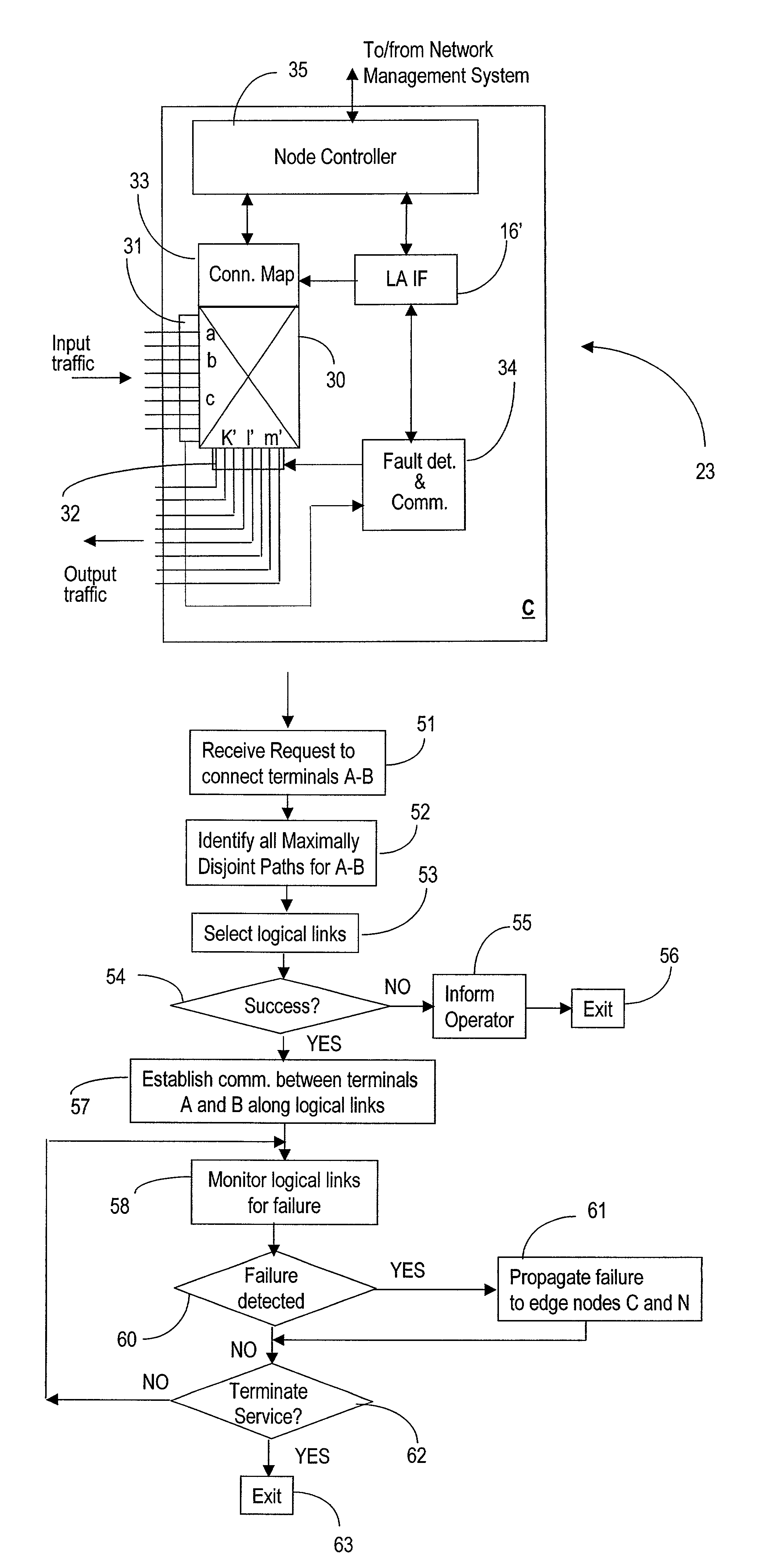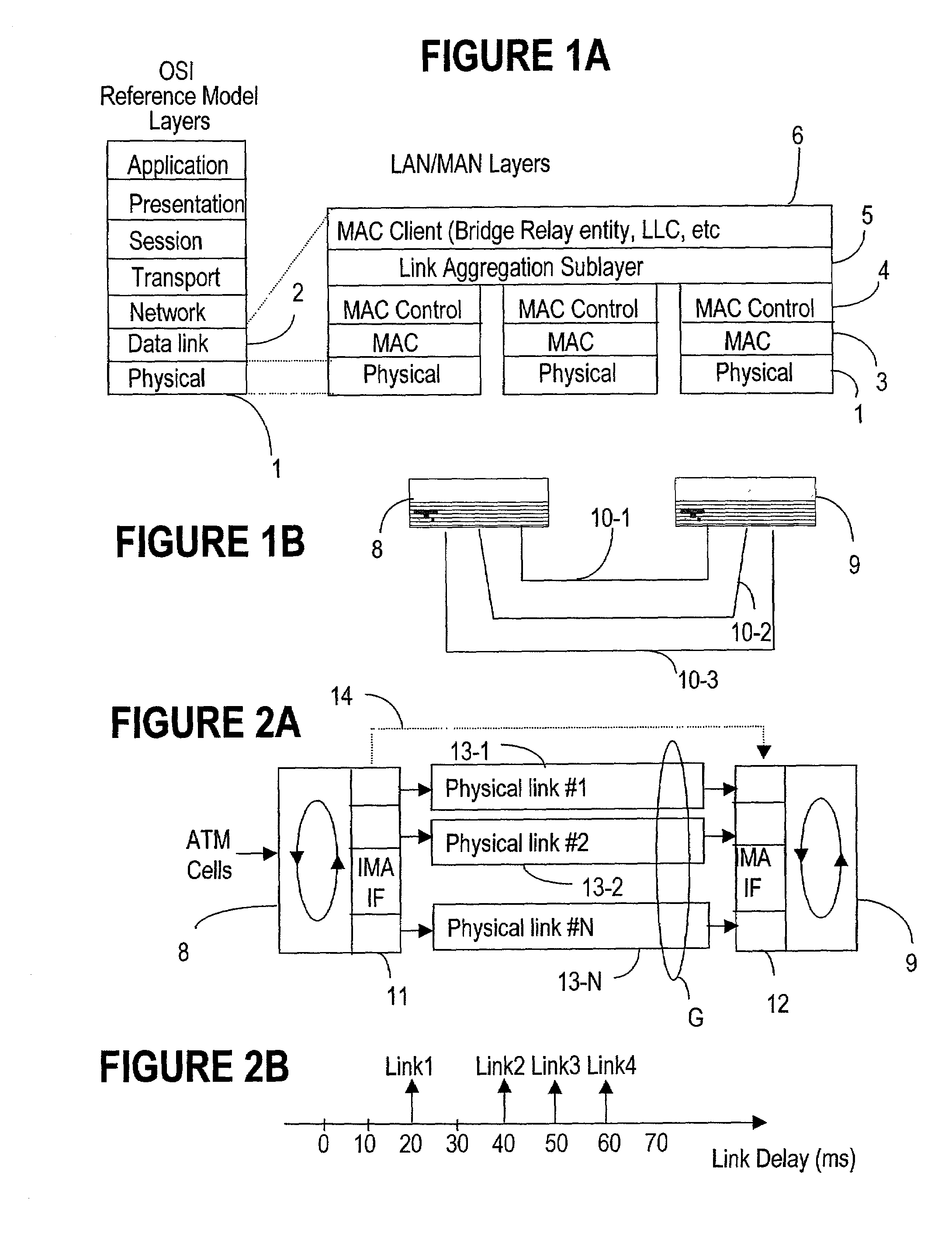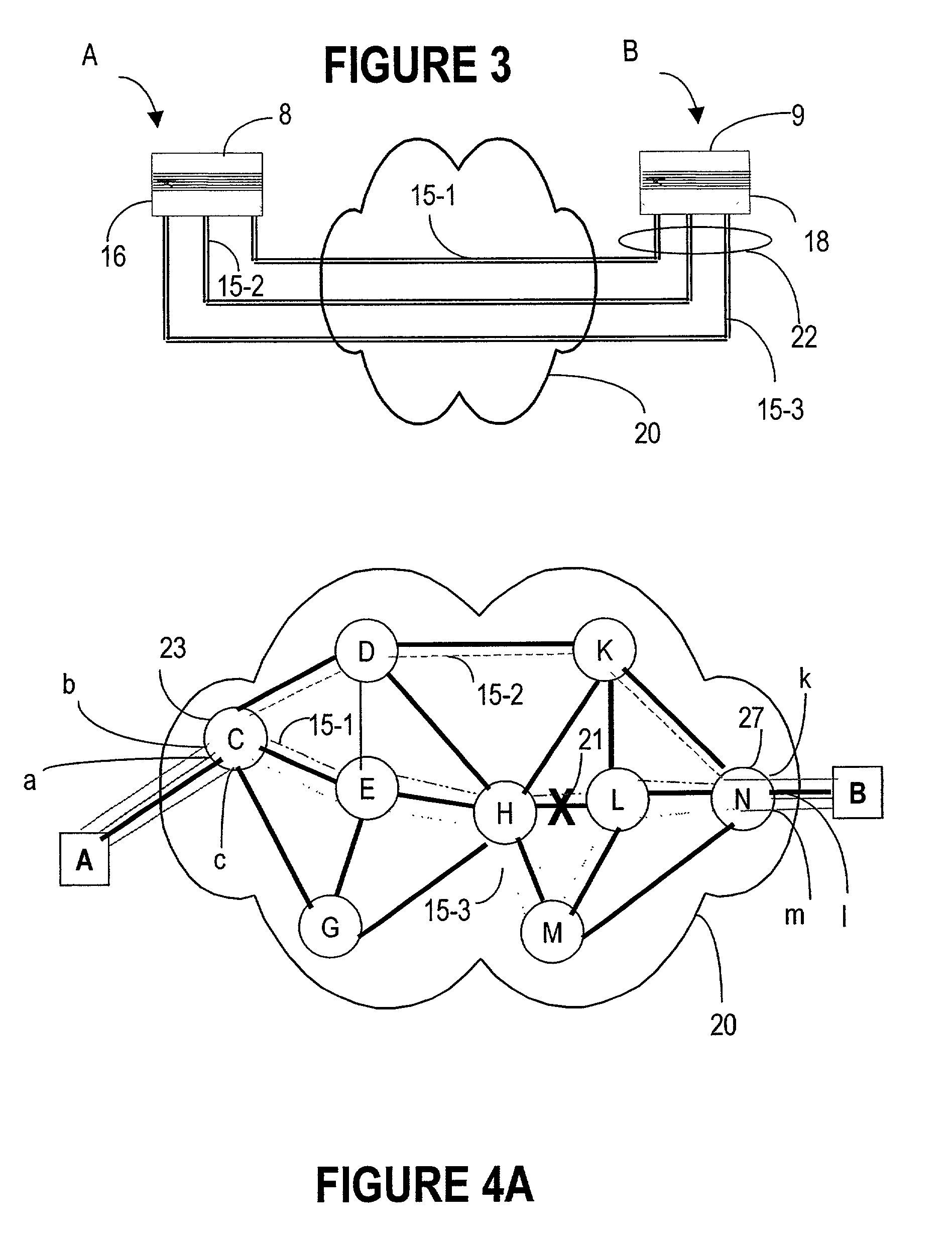Extension of link aggregation protocols over the network
a link aggregation and network technology, applied in the field of communication networks, can solve the problems of insufficient shared bus architecture, unnecessarily increasing the cost of communication, and insufficient high-speed t3/e3 links, so as to avoid the use of costly high-speed carriers, improve availability, and efficient bandwidth provision
- Summary
- Abstract
- Description
- Claims
- Application Information
AI Technical Summary
Benefits of technology
Problems solved by technology
Method used
Image
Examples
Embodiment Construction
[0028]The following description is of a preferred embodiment by way of example only and without limitation to combination of features necessary for carrying the invention into effect.
[0029]A network architecture defines protocols, message formats, and other standards to which all the devices and software must adhere. Functional network layers are established within a network architecture, each layer for performing a specific set of functions and a specific set of services. Protocols define the services covered across a layer interface, as well as the rules followed for performing that service.
[0030]FIG. 1A illustrates the OSI reference model, for an access network using a link aggregation sub-layer.
[0031]The International Standards Organization (ISO) proposes a seven layer reference model for computer networking, which are still used to design standards for the communication networks architecture. Only link layer 2 is of relevance to this invention. Thus, the network, transport, ses...
PUM
 Login to View More
Login to View More Abstract
Description
Claims
Application Information
 Login to View More
Login to View More - R&D
- Intellectual Property
- Life Sciences
- Materials
- Tech Scout
- Unparalleled Data Quality
- Higher Quality Content
- 60% Fewer Hallucinations
Browse by: Latest US Patents, China's latest patents, Technical Efficacy Thesaurus, Application Domain, Technology Topic, Popular Technical Reports.
© 2025 PatSnap. All rights reserved.Legal|Privacy policy|Modern Slavery Act Transparency Statement|Sitemap|About US| Contact US: help@patsnap.com



